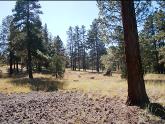

|
Terrestrial Restoration Ecology Lab |
|
Vegetation dynamics reflect the net effects of many factors, including climate, abiotic environment, biotic interactions, and disturbance history. Understanding how these factors interact and affect species coexistence and productivity is a major research area within ecology. These studies are complicated, however, by the long time-scales over which changes may occur and by the complex multivariate nature of the resulting data. We are examining vegetation dynamics in several terrestrial ecosystems. Examples of these research projects are provided below. Future directions include examining how well plant functional traits can predict vegetation dynamics, relating vegetation dynamics to changes in ecosystem services, and exploring the effects of climate change on vegetation dynamics.
Select Relevant Publications: Harpole, WS, LL Sullivan, EM Lind, J Firn, PB Adler, ET Borer, J Chase, PA Fay, Y Hautier, H Hillebrand, AS MacDougall, EW Seabloom, R Williams, JD Bakker, MW Cadotte, EJ Chaneton, C Chu, EE Cleland, C D’Antonio, KF Davies, DS Gruner, N Hagenah, K Kirkman, JMH Knops, KJ La Pierre, RL McCulley, JL Moore, JW Morgan, SM Prober, AC Risch, M Schuetz, CJ Stevens, and PD Wragg. 2016. Addition of multiple limiting resources reduces grassland diversity. Nature 537:93-96. doi:10.1038/nature19324 Mitchell, RM, JD Bakker, JB Vincent, and GM Davies. 2017. Relative importance of abiotic, biotic, and disturbance drivers of plant community structure in the sagebrush steppe. Ecological Applications 27:756-768. doi:10.1002/eap.1479 Davies, GM, JD Bakker, E Dettweiler-Robinson, PW Dunwiddie, S Hall, J Downs, and J Evans. 2012. Trajectories of change in sagebrush-steppe vegetation communities in relation to multiple wildfires. Ecological Applications 22:1562-1577. dx.doi.org/10.1890/10-2089.1 Strahan, RT, DC Laughlin, JD Bakker, and MM Moore. 2015. Long-term protection from heavy livestock grazing affects ponderosa pine understory composition and functional traits. Rangeland Ecology and Management 68:257-265. http://dx.doi.org/10.1016/j.rama.2015.03.008 |
|
Research team: NutNet (Nutrient Network) We are active members of this global collaborative research experiment examining the effects of fertilization and herbivory on grassland diversity and productivity. We have been exploring these questions at our site since 2007. A key insight of this work is the need to assess the reproducibility of ecological results—the complexity of these systems makes robust generalizations surprisingly difficult to identify. Our participation in this project is funded by the David R. M. Scott Professorship. Photo on the Smith Prairie NutNet site. Taken by J. Bakker in July 2011. |
|
Research team: Claire Wainwright (SEFS), Matt Davies (Ohio State), Rachel Mitchell (Duke) We are examining the effects of climate, human activities, and natural disturbances on the dynamics of sagebrush-steppe vegetation in eastern Washington. This research is funded by the Department of Defense Legacy Program and the Joint Fire Science Program. |
|
Effects of fertilization and herbivory on grasslands |
|
Vegetation dynamics in the sagebrush steppe |


|
Vegetation Dynamics |
|
Research team: Carson Sprenger (Rainshadow Consulting) We examined stand structural development and fire history of several forested sites in the San Juan Islands. This research was funded by the Bureau of Land Management. Photo of the Bitte Baer Preserve, Waldron Island. Taken by P. Dunwiddie in May 2008. |
|
Dendrochronology |

|
Research team: Rob Strahan, Margaret Moore (NAU); Daniel Laughlin (U of Wyoming) We are using a rare long-term dataset to quantify changes in the herbaceous plant community of southwestern ponderosa pine forests over the last century. Photo of ponderosa pine stand on cinder soils. Taken by A. Sánchez Meador in October 2003. |
|
Understory dynamics in ponderosa pine forests |

